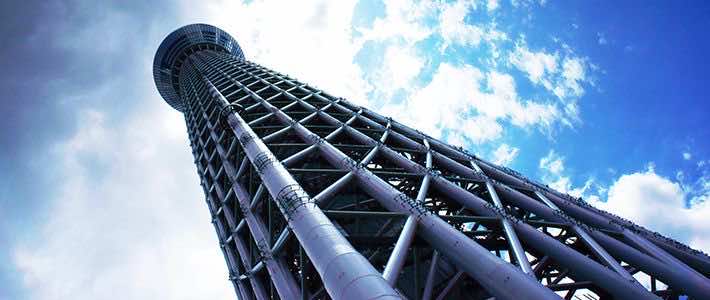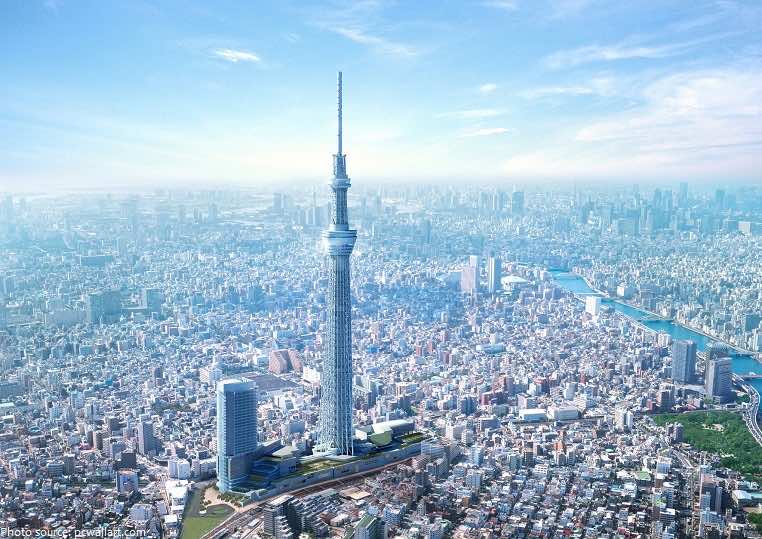Tokyo Skytree is a 634-meter tall communications tower located in Tokyo and is currently the world’s tallest tower and the world’s second tallest structure after the Burj Khalifa. Skytree was completed on Leap Day, 29 February 2012, with the tower opening to the public on 22 May 2012. It has become a symbol of the Japanese capital and centerpiece of the Tokyo Skytree Town in Sumida Ward.
At its base is a large shopping center with an aquarium and there are restaurants and observation decks located in the tower along with all the engineering functions that serve terrestrial television and radio services. The planning of the structure began in February 2005 when Tobu Railway Corporation expressed a desire to build a tower that would provide broadcasting services and house the administrative authorities of Sumida-Ward. At the beginning of this project, the client asked the designers to create “a new landscape beyond time and space.” Three major objectives considered in the design were to merge futuristic design with traditional Japanese sensibilities, be a catalyst for the revitalization of the city and be safe and secure concerning seismic issues.

The footprint of the Sky Tree is an equilateral triangle, each side is approximately 68m. Of the three vertices are extended lines, which converge to 50 m above the level, where the lines extend further to 600 meters. The ratio of length to width is approximately 9:01, thus creating a thin vertical form. The shape transforms gradually from a triangle into a complete circle at an elevation of 320 meters. The change in shape, from the triangle to the circle, also means “warp” and “fall”, which are traditional forms of Japanese culture. The ridgeline of the triangle has a “warp”, usually seen with Japanese swords and the transition section where the triangle changes to a circle is the “fall” seen in the central columns, this is a reference to the architecture in the Traditional temples of Nara and Heian eras. Overall the tower represents a harmony between neo futuristic design and traditional Japanese beauty.



